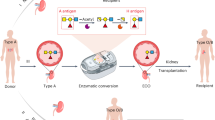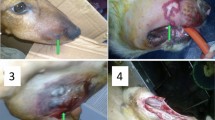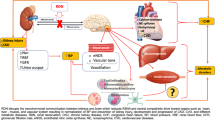Abstract
WHEN the species barrier is crossed in organ transplantation, rejection is often hyperacute and immediate. Thus when a sheep kidney is perfused from the dog circulation, the blood flow through the kidney ceases in about 10 min and the transplanted organ increases in weight considerably. Platelet levels and platelet stickiness measured in the sheep renal vein effluent and in the dog circulation reveal marked platelet trapping by the rejected organ. Those platelets that do emerge are not very sticky. The second of a pair of sheep kidneys connected to the same dog circulation after rejection of the first follows a similar pattern of rejection (Tables 1 and 2).
This is a preview of subscription content, access via your institution
Access options
Subscribe to this journal
Receive 51 print issues and online access
$199.00 per year
only $3.90 per issue
Buy this article
- Purchase on SpringerLink
- Instant access to full article PDF
Prices may be subject to local taxes which are calculated during checkout
Similar content being viewed by others
References
Hellem, A. J., Scand. J. Clin. Lab. Invest., 12, Suppl. 51 (1960).
Author information
Authors and Affiliations
Rights and permissions
About this article
Cite this article
GHILCHIK, M., MORRIS, A. Modification of Hyperacute Rejection of Sheep Kidney Heterografts in the Dog using a Trypsin Inhibitor. Nature 233, 557–559 (1971). https://doi.org/10.1038/233557a0
Received:
Issue date:
DOI: https://doi.org/10.1038/233557a0
This article is cited by
-
Characteristics of hyperacute rejection of swine kidney xenografts perfused with canine blood
International Urology and Nephrology (1976)



